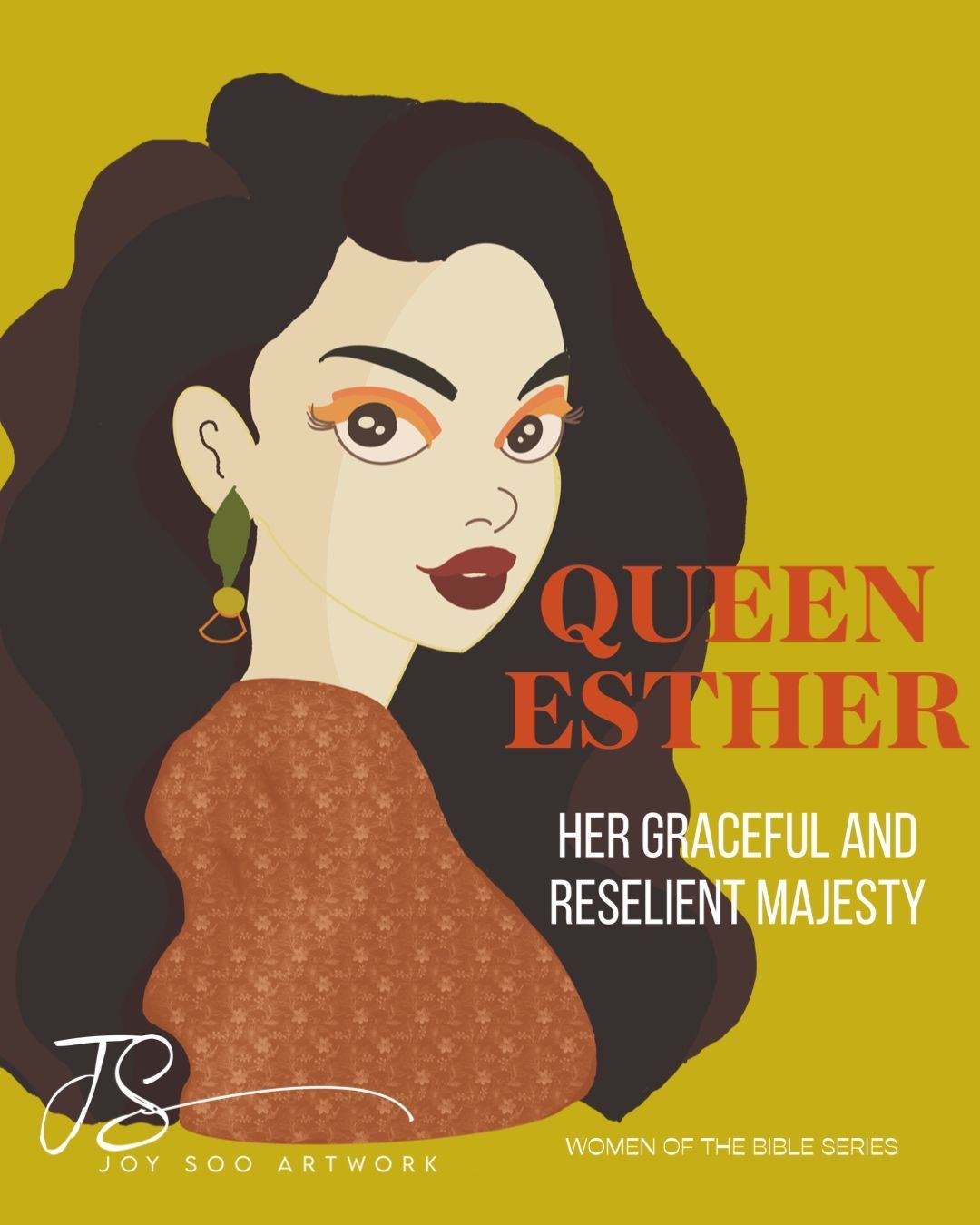
ESTHER, Her Graceful and Reselient Majesty
The story of Esther can be found in the Old Testament of the Bible, specifically in the Book of Esther. This book is named after its central figure, Esther, a Jewish woman who becomes the queen of Persia and plays a crucial role in saving her people from a planned genocide.
In the ancient kingdom of Persia, a Jewish girl named Esther found herself in an extraordinary position. Raised by her cousin Mordecai, Esther had grown up in the bustling city of Susa, living a quiet life. But the quiet would soon be replaced by the clamor of royal courts and the tension of political intrigue.
King Ahasuerus, having deposed his former queen, sought a new queen and summoned beautiful young women from across the empire to his palace. Esther, with her grace and beauty, caught the king's eye, and she was chosen to become queen. However, she kept her Jewish identity a secret, as advised by Mordecai.
Meanwhile, a dark cloud loomed over the Jewish people. Haman, a high-ranking advisor to the king, nursed a deep resentment towards Mordecai, who refused to bow to him. Consumed by anger, Haman devised a plan to annihilate all the Jews in the empire. He manipulated the king into issuing a decree that set a date for the mass execution.
Mordecai, upon learning of the edict, tore his clothes in anguish and sent word to Esther, urging her to intervene. Esther faced a harrowing choice. Approaching the king without an invitation could mean her death, yet remaining silent would doom her people. Summoning her courage, Esther decided to act, instructing Mordecai and the Jews to fast and pray for her.
Dressed in her royal robes, Esther approached the king. To her relief, he extended his golden scepter, signaling that she could speak. She invited the king and Haman to a banquet, where she unveiled her identity and revealed Haman's plot. The king, enraged by the betrayal, ordered Haman to be executed on the very gallows he had prepared for Mordecai.
With Haman gone, the king issued a new decree allowing the Jews to defend themselves. On the day of the supposed massacre, the Jews triumphed over their enemies, securing their safety and survival. The victory was celebrated with joy and feasting, leading to the establishment of the festival of Purim, commemorating Esther's bravery and the deliverance of her people.
The story of Esther endures as a tale of courage, faith, and the unexpected ways in which a single individual can change the course of history.
DISCUSSION STARTERS
How does Esther’s decision to reveal her identity and advocate for her people reflect on the importance of courage and self-acceptance? Can you think of a time when you had to stand up for your beliefs or identity?
What leadership qualities does Esther exhibit throughout the story? In what ways does she sacrifice her own safety for the greater good, and how can this inspire us in our own leadership roles?
In what ways do you see yourself in Esther? How can reflecting on her strengths and weaknesses help you grow personally?
PRAYER
Gracious God,
We gather as a community, inspired by the story of Esther and her unwavering courage. We thank You for her strength and faith, reminding us that we too can make a difference in the world around us.
Help us to stand together in unity, supporting one another as Esther did for her people. Grant us the wisdom to recognize the needs in our community and the courage to speak out against injustice. May we be a source of hope and strength, just as she was.
As we navigate our own challenges, fill our hearts with compassion and a commitment to act for the greater good. Let us celebrate the diversity among us and work hand in hand to uplift those who are marginalized.
In Your grace, may we find the courage to be advocates for change and peace.
Amen.